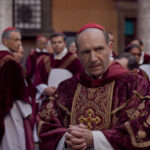As the sixth largest cathedral in the world, the Episcopal Church’s landmark Washington National Cathedral seats about 4,000 worshippers. Across the Potomac River in Arlington, Virginia, Restoration Anglican Church, a congregation planted in 2009 as part of the Anglican Church in North America, has a building completed in 2014 that seats about 360.
Yet Restoration reported an Average Sunday Attendance (ASA) of 495 persons in 2022, while the National Cathedral reported 423 the same year. The Anglican parish also reported congregational giving (known as plate-and-pledge) of nearly three times the number ($2,613,723) of the Episcopal Cathedral ($967,872), despite larger membership rolls of 1,517 and a significant endowment at the latter, compared to membership of 1,074 and no endowment at Restoration.
Neither Restoration nor the National Cathedral are broadly reflective of their respective denominations on a nationwide scale, with each listing larger-than-average congregations. But, as a local microcosm of churchgoers in a major metropolitan area, the two churches less than five miles apart may serve to illustrate a sea change in how each emerged following a period of COVID restrictions and a corresponding attendance drop.
Statistical Release
More than 55 percent of Episcopal parishes now find themselves in a state of long-term decline, dropping 10 percent or more across the past five reporting years, while only 12 percent are growing an equivalent amount across the same period, according to Episcopal Church statistics released today.
Information compiled from 2022 parochial reports by the Episcopal Church Office of the General Convention reveals a partial attendance rebound following the conclusion of COVID restrictions as well as a much steeper-than-usual decline in denominational membership.
Episcopal membership rolls dropped 88,306 persons from 1,520,388 in 2021 to 1,432,082 in 2022, down six percent, the largest single year loss reported in memory. The denomination has now lost 23 percent of members in the past 10 years, a rate that is accelerating.
Attendance increased by 56,306 persons across the same year, up 19 percent. However, this reflects only a third of the number lost in the prior year when attendance dropped by 165,328 persons due to COVID. The denomination shuttered a net 45 parishes in 2022, down from 6,294 to 6,249.
Numbers were far from even across dioceses. Among the hardest hit for membership were Southwest Virginia (-11.7%), Maryland (-13.3%), Bethlehem, PA (-12.1%), Newark, NJ (-11.3%), Puerto Rico (-22.6%), Northern Indiana (-11.6%), Iowa (-12.9%), Montana (-17.1%), Nebraska (-14.2%), Kansas (-11.5%), California (-15.8%), Idaho, (-13.0%), Nevada (-15.7%), and Olympia, WA (-12.5%).
South Dakota, South Carolina, East Carolina, and the newly readmitted Diocese of Cuba each posted modest membership growth.
Finances
Revenue is customarily a bright spot in the annual reports of the Episcopal Church, which draws an affluent membership relative to the overall U.S. population. In 2022, the annually tracked giving metric rose from $1,335,654,413 to $1,336,349,803 (up $695,390 or .05%). However, an Average Inflation Rate of 8 percent in 2022 more than erases that amount in a real loss of inflation-adjusted dollars. Plate-and-Pledge accounts for 55 percent of Episcopal Church income.
While there are fewer Episcopalians, those that remain continue to contribute a larger share of finances. The average pledge has actually increased over the past decade. This may be due to older congregants (49.5 percent of Episcopalians are age 65 or older) in a late career or early retirement stage of life, when incomes customarily peak.
According to the Episcopal Church’s analysis of the 2022 parochial report data, in 2013 the average pledge was $2,553 while in 2022 the average pledge was $3,658. This is an overall increase even when accounting for inflation during this time period.
The COVID-19 pandemic had a significant impact on religious life across the country. Nearly half (47.5 percent) of Episcopal congregations indicated that the pandemic had a somewhat significant or very significant negative impact on them.
More:
Read IRD coverage of the previous year (2021) Episcopal Church statistics here.
Anglican Church in North America 2022 statistics released in June can be accessed here.
View the 2022 Episcopal Church Table of Statistics here, including statistics on baptism, marriage and burial.






Comment by Dan W on September 19, 2023 at 7:32 am
Heating/cooling a 4000 seat sanctuary for less than 500 congregants is not sustainable. What percent of actual operating costs of the cathedral is covered by plate and pledge giving? I understand the challenges faced by a small congregation in a large, expensive facility, but this is on a mega scale!
Comment by David on September 19, 2023 at 8:22 am
There was little effort to heat churches until the early 19th century. Prior to this, people wore heavy outdoor clothing in the stone cathedrals. The multiple layers of clergy robes helped to keep them warm. Protestant meeting houses often had box pews that offered some protection from drafts. Occupants might bring charcoal warmers to services. Hellfire sermons were likely helpful as well.
The “National Cathedral” in Washington was finally airconditioned in 2001 after nearly 30 years of lukewarm progress.
Comment by c on September 19, 2023 at 3:35 pm
Dan W., up until 2014 the National Cathedral didn’t charge admission to tourists for general sightseeing/the self-guided tour, but instead had a donation box and a suggested amount. Specialty tours had a fee (still do). That changed to a general sightseeing charge, and the main reason given was to help cover the costs of running the place. Today that charge is $15 ($10 for ages 5-12), with 20% discounts for students and seniors Monday-Wednesday.
They’re also still fundraising to complete repairs on the Cathedral after the earthquake in August 2011. They’re doing the repairs as the funds come in, and the total cost of repairs runs into the tens of millions of dollars.
Jeffrey, I assume that the average attendance for the Cathedral includes visitors/tourists, but correct me if I’m wrong. I’m also curious to know the average Sunday attendance for St. Albans. I’m just spitballing here, but given St. Albans has been around since 1851 I have to think it is more of the “parish church” for the locals than its next-door neighbor, which only started to get built in 1907.
Comment by Jeffrey Walton on September 29, 2023 at 12:14 pm
Hello C,
Attendance is likely limited to in-person participation in the principal worship services at the cathedral (there are two: Sundays at 11:15 a.m. and a smaller 8 a.m. chapel service). I am unsure if the 5 p.m. Sunday choral evensong services or the weekday noon eucharist services are included, but I would guess the latter have relatively few participants. Tourists who visit outside of worship services are not counted in the attendance numbers.
In regards to St. Albans, yes, it functions as more of a parish church (the cathedral didn’t even have a regular congregation that people could join as members until former Dean Samuel Lloyd instituted it in the mid/late 2000s). St. Alban’s reports healthy giving of $1.6 million (much more than the cathedral congregation) and a membership of 854, down from a high of 1,940 in 2016. Attendance was 401 in 2011, dropped to 111 in 2021, and partially rebounded to 197 in 2022.